#Swahili coast
Explore tagged Tumblr posts
Text

Dar es Salaam, Tanzania: Dar es Salaam (Abode of Peace) is the largest city and financial hub of Tanzania. It is also the capital of the Dar es Salaam Region. Dar es Salaam is the largest city in East Africa and the sixth-largest in Africa. Located on the Swahili coast, Dar es Salaam is an important economic center and one of the fastest-growing cities in the world. Dar es Salaam is Tanzania's most prominent city for arts, fashion, media, film, television, and finance. Wikipedia
149 notes
·
View notes
Text
Africa Insights: The Carved Door
youtube
2 notes
·
View notes
Text




Sunset on the boardwalk
Low light photography
• The Marina, Mombasa,
East Coast of Africa.
#Mombasa#ocean#sea#east coast of Africa#Africa#Kenya#Swahili Coast#yacht#yachting#design#exteriors#glass#steel#akiey#lowlight photography#254
0 notes
Link
0 notes
Text
they did jamil's story so dirty, so im here to do him justice. honestly, a lot of my depictions of him come from various pieces of arabic literature that criticize the caste system/social hierarchy as a whole. a lot of our most romantic literature comes from people who could not be in love with their muses due to social/ethnic hierarchies. as such, a lot of the writing that i have done of jamil is inspired by those conflicts and just arabic poetry in general.
his story is very underdeveloped and the fandom treats him horribly. that isn't controversial, at least i don't think so. there's a lot of orientalism in the work of twisted wonderland when it comes to the scarabia duo, as well as leona kingscholar too, so im just doing my best to rectify that via sharing bits of arab culture and history through him and kalim as well, soon enough. i wanna do with same with leona, hopefully. im not east african, but i am yemeni and it takes like one-two hours in a boat from the coast of aden to get to east africa.
recently, i have been looking into studying swahili. btw, swahili comes from the arabic word meaning "coast" but it is a bantu language. due to their proximity to the coast and the arabian peninsula, the languages and cultures have mixed a lot (look into socotra island). all that rambling aside, i love the scarabia duo and leona. they deserved better from the creators as well as the fandom.
#🩷 — chats with amora#💓 — quick thoughts#twisted wonderland#jamil viper#leona kingscholar#kalim al asim#twst x reader#orientalism#twisted wonderland x reader#jamil viper x reader#kalim al asim x reader#leona kingsholar x reader
499 notes
·
View notes
Text



Great Zimbabwe: An In-Depth Analysis of Africa’s Architectural and Economic Masterpiece
Introduction: The Greatness of African Civilization
Great Zimbabwe stands as one of the most remarkable and sophisticated civilizations in African history. Located in modern-day Zimbabwe, it flourished between 1100 and 1500 CE, serving as the centre of a vast trade empire that connected Africa to the Middle East, India, and China.
Despite colonial-era attempts to deny its African origins, Great Zimbabwe was entirely built by Black Africans, proving that African civilizations developed advanced architecture, urban centres, and economic systems long before European contact.
From a Garveyite perspective, the study of Great Zimbabwe is crucial because it represents:
Black architectural brilliance – The largest ancient stone city in sub-Saharan Africa.
Black economic power – A major hub for gold, ivory, and international trade.
Black political sovereignty – An empire built, governed, and controlled by Africans.
By reclaiming the history of Great Zimbabwe, Black people worldwide can reject colonial myths and recognize Africa’s legacy of innovation, wealth, and self-sufficiency.
1. The Origins of Great Zimbabwe
A. Geographic and Strategic Importance
Great Zimbabwe was built in a strategic location with access to gold mines, fertile lands, and trade routes.
The civilization was part of the Shona culture, whose people were skilled in ironworking, agriculture, and trade.
Its name, Zimbabwe, means “House of Stone” in the Shona language, reflecting its impressive stone structures.
Example: The city covered nearly 1,800 acres and housed up to 18,000 people, making it one of the largest pre-colonial African urban centres.
Key Takeaway: African civilizations were not nomadic or primitive—they built vast cities with complex infrastructures.
2. The Architectural Genius of Great Zimbabwe
A. The Great Enclosure: An African Architectural Wonder
The most famous structure in Great Zimbabwe is the Great Enclosure, a massive circular stone wall built without mortar.
The walls reach up to 36 feet high and stretch over 820 feet in length, making them the largest ancient stone structures south of the Sahara.
The conical tower inside the Great Enclosure is believed to be a symbol of power, wealth, and spiritual significance.
Example: European colonists refused to believe Black Africans built Great Zimbabwe and tried to attribute it to foreign civilizations (Phoenicians, Arabs, or even aliens), highlighting their racist denial of African ingenuity.
Key Takeaway: Africa had master builders who engineered grand cities using advanced techniques, disproving colonial myths.
B. The Hill Complex: The Royal and Religious Centre
The Hill Complex, located on a granite hill, served as the political and religious centre of Great Zimbabwe.
It was the seat of the king and was likely used for religious ceremonies, governance, and strategic defense.
The Shona people practiced ancestor worship, and the structures reflect a deep spiritual connection to their land and heritage.
Example: Many structures align with the movement of the sun and stars, proving that Great Zimbabweans had advanced knowledge of astronomy.
Key Takeaway: Black civilizations had political, spiritual, and scientific achievements that rivalled other global civilizations of the time.
3. Great Zimbabwe’s Economic Power: The Centre of a Global Trade Network
A. Control Over Gold Trade
Great Zimbabwe controlled rich gold mines in the region, making it one of the wealthiest African states of its time.
It became a major gold supplier for Swahili coastal cities, the Middle East, and even China.
Gold from Great Zimbabwe was traded across the Indian Ocean and found in Persian, Indian, and Chinese markets.
Example: The famous Kilwa Sultanate on the Swahili Coast depended on Great Zimbabwe for its gold supply, showing Africa’s key role in global trade.
Key Takeaway: Africa was not isolated—its resources fueled economies worldwide long before European colonization.
B. Trade with Asia and the Middle East
Archaeological discoveries in Great Zimbabwe include Chinese porcelain, Persian glass, and Indian beads, proving international trade.
The Swahili Coast, linked to Great Zimbabwe, had trading posts with Arab, Persian, and Indian merchants.
Ivory, copper, iron, and textiles were also traded, creating a diverse and wealthy economy.
Example: The trade connections of Great Zimbabwe show that Africans were engaged in globalization centuries before European involvement.
Key Takeaway: Africa was a key player in world trade, not an isolated or underdeveloped continent.
4. The Political and Social Structure of Great Zimbabwe
A. The Role of the King and Governance
Great Zimbabwe was ruled by a monarch, often referred to as the Mwene Mutapa (King).
The king controlled trade, wealth, and spiritual leadership, serving as a link between the people and the ancestors.
The empire was organized into a federation of smaller kingdoms, all loyal to the central ruler.
Example: The Kingdom of Mutapa, which rose after Great Zimbabwe’s decline, continued its legacy and expanded its power into Mozambique.
Key Takeaway: African civilizations had complex governance structures, contradicting colonial lies about African “tribalism.”
B. The Social Structure: A Balanced Society
The society was hierarchical, with royalty, nobles, traders, craftsmen, and farmers contributing to the empire.
Women held important roles in agriculture, trade, and spiritual leadership.
The people of Great Zimbabwe built strong, organized communities with specialized labor and social systems.
Example: Women played key roles in spiritual rituals and trade, showing the presence of gender balance in African societies.
Key Takeaway: African civilizations were structured, organized, and socially progressive.
The Decline of Great Zimbabwe: Lessons for Today
A. Why Did Great Zimbabwe Collapse?
The empire declined due to:
Overuse of natural resources, including deforestation and soil depletion.
Shifting trade routes that bypassed the city, reducing its economic power.
Internal conflicts and possible political instability.
By 1500 CE, Great Zimbabwe was largely abandoned, but its culture and influence lived on in successor states like the Kingdom of Mutapa.
Example: The modern nation of Zimbabwe is named after Great Zimbabwe, honouring its legacy of African greatness.
Key Takeaway: No Black nation can survive without sustainable economic policies, resource management, and strong leadership.
6. The Garveyite Vision: Rebuilding Africa’s Lost Glory
Great Zimbabwe proves that Africa was a centre of trade, culture, and innovation.
Black people today must control their own resources, just as Great Zimbabwe controlled its gold mines.
African architecture, governance, and economic systems must be reclaimed and studied to guide future development.
Pan-African unity is necessary—Black nations must work together as Great Zimbabwe did with the Swahili Coast.
Final Thought: Will We Reclaim the Legacy of Great Zimbabwe?
Marcus Garvey taught:
“The Black skin is not a badge of shame, but rather a glorious symbol of national greatness.”
Will Black people continue to believe colonial lies about African history, or will we reclaim the truth?
Will we build self-sufficient Black economies, or remain dependent on foreign powers?
Will we celebrate our past and use it to shape our future, or let our history be erased?
The Choice is Ours. The Time is Now.
#black history#black people#blacktumblr#black tumblr#black#black conscious#pan africanism#africa#black power#black empowering#blog#marcus garvey#great zimbabwe#black excellence#ReclaimOurHistory#Garveyism
57 notes
·
View notes
Text
Registering this prediction early: in 10 to 40 years when the Sahel region calms down politically, a lot of important medieval manuscripts (both in Arabic and in sub-Saharan African languages) are going to come to scholarly attention, which are going to significantly rewrite what we know about African history and linguistics.
It's basically already known that these manuscripts exist, the Timbuktu manuscripts have already been widely commented on and, in addition to Arabic texts, there are also Songhay texts and evidently texts in other languages too. Someone just pointed me to these (c. 15th century?) manuscripts in Old Kanembu. People have this impression of sub-Saharan Africa as a place that wasn't literate prior to colonialism, and while that's true of the interior and southernmost regions, it is varying degrees of not true for West Africa, the Sahel, and East Africa (most people know this about the Horn of Africa, fewer about the Swahili coast, etc.).
In any case the problem is that most of this writing is not exactly accessible to the wider scholarly community, it's either difficult to access due to political circumstances or because it's privately owned (as is the case for many of the Timbuktu manuscripts). But I think we should probably prepare for some quite revelatory discoveries about medieval Africa in the next half century or so as more texts come to light. It's going to be a cool time I suspect.
162 notes
·
View notes
Text
What is the real world equivalent of Afterglow/Sunset Savanna?
At first, I thought (hoped, lol) it was South Africa, but I'm not too sure
One of the languages sung in the original Lion King, in fact, the opening line of the movie is Zulu! ("Nants ingonyama bagithi Baba," which means "Here comes a lion, father.") Zulu is one of South Africa's 12 official languages.

The diamond patterns and general style of Leona's clothing are quite similar to that of the Swahili people, although diamond patterns can also be found in traditional Zulu clothing and beadwork.
Swahili, too, is one of the languages spoken in The Lion King and is mainly spoken in countries along the East African Coast outside of South Africa.
However, looking at the background in one of the screens in the actual game (and a background in the event iirc) you can find proteas in the right corner
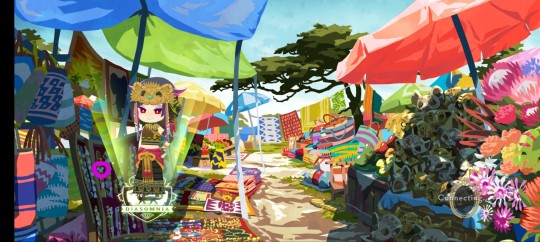
(Ignore how I circled the hidden mickey lol). But there on the right are pincushion proteas, as well as king, queen, and prince proteas. These fynbos flowers are native to South Africa, specifically the Cape Floral region. They're also South Africa's national flower.
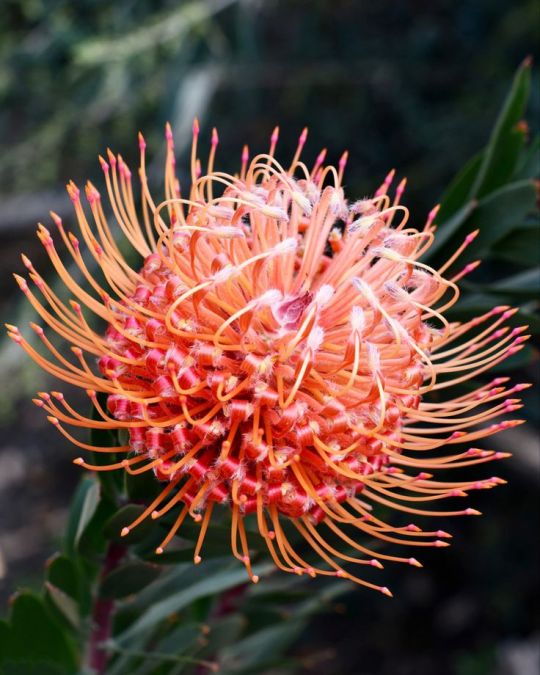
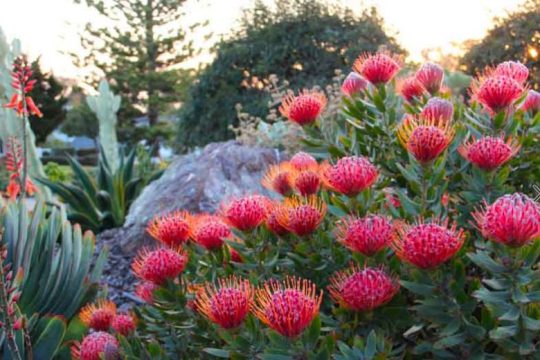
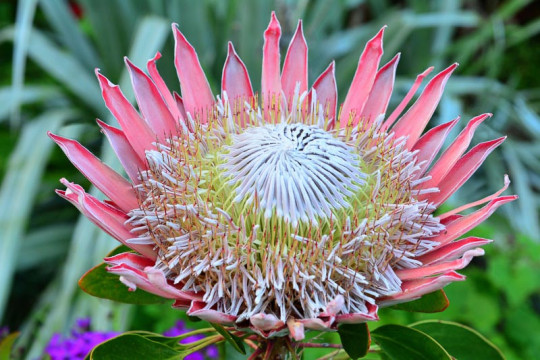

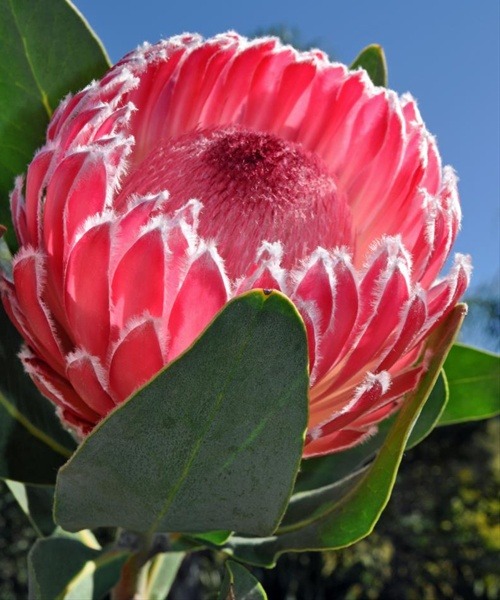
Of course, this is nowhere near the East African coast.
The background also reminds me of fond memories of going to various craft markets or passing by people selling their wares on the side of the road. Woodwork, pottery, beadwork, clothes, baskets, etc were always so fun and beautiful to look at, and you can see those things in the background too.
I don't live anywhere near the East African Cost, I live in the cape, so I'm not sure what local town markets look like there.
So from what I've seen, Yana probably took inspiration from the cultures and countries the two of the three languages in The Lion King, so it's a murky mix of more than one place (which is unfortunate since they're so distinct).
I still like to think it's the twst version of South Africa, though, since we're quite well known for having many unique cultures, languages and traditions in one place, and the Sunset Savanna seems similar.
#quinn quips#twisted wonderland#leona kingscholar#savanaclaw#cloudcalling on the savanna#twst analysis
159 notes
·
View notes
Text

Stone Town, Zanzibar, Tanzania: Stonetown of Zanzibar, also known as Mji Mkongwe, is the old part of Zanzibar City, the main city of Zanzibar, in Tanzania. The newer portion of the city is known as Ng'ambo, Swahili for 'the other side'. Stone Town is located on the western coast of Unguja, the main island of the Zanzibar Archipelago. Wikipedia
135 notes
·
View notes
Text

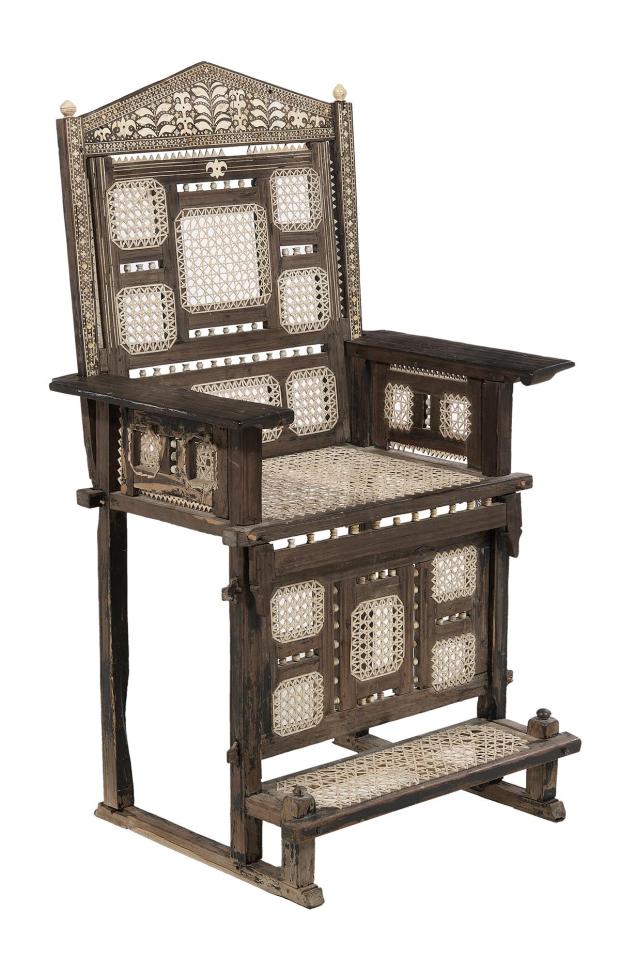
the kiti cha enzi (swahili for "chair of power") style of chair reflects both the tradition of decorative chairs being associated with wealth and power in many niger-congo language-speaking societies, as well as the various artistic influences which converged on the swahili coast due to trade. the chairs, only ever made in mombasa and the islands of pate, lamu, and zanzibar, are wooden - mostly ebony - with the seats made of woven string, and inlaid with ivory, bone, and sometimes silver.
the style was first developed in the 15th century. (this particular chair dates to the 19th.) despite the chairs' intricacy, they're also designed to be easy to take apart and carry - an important feature for past swahili rulers and other important figures who were always on the move. wealthy families tended to have at least a few which they'd use to seat important guests while less wealthy families may have owned less decorative versions.
#swahili coast#items#my posts#site doesn't say where this was made so i tagged both. shrug#also i specify language because the like. importance of the chair itself is more pronounced#you'd be surprised at how much similarity language groups carry over despite geographic and historical distances#pretty much every greek/roman god has a hindu counterpart for example
14 notes
·
View notes
Text
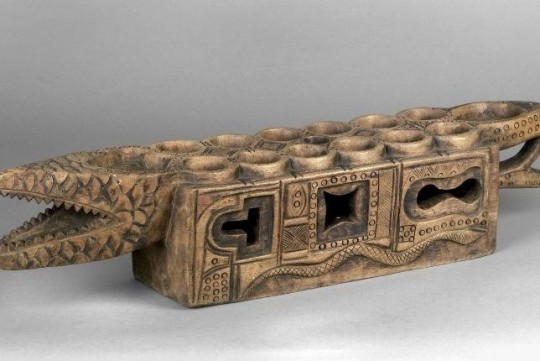
2 notes
·
View notes
Text
TWISTED CHARACTERS AND THE MUSIC I THINK THEY'D LIKE! (savanaclaw ver.)

the part two i promised for no one specifically. i'm mainly doing every dorm because i want to -isa<3

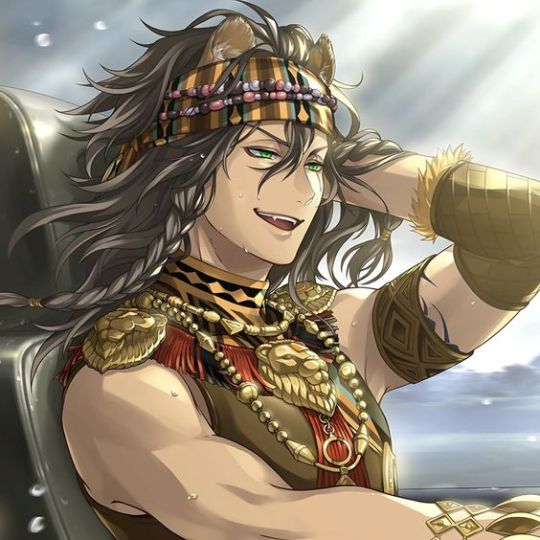


LEONA KINGSCHOLAR
I actually think Leona would listen to music fairly frequently. He's a rich kid, I def headcanon he got one of them expensive ass sports cars and probably speeds on the highway blasting music, pissing off literally everyone else tryna drive home from work. His music taste would be surprisingly diverse, too. He'd probably like a mix of 2000s rnb which includes like Rihanna, Ne-Yo, AALIYAH SO OBVIOUSLY, Akon, and he'd be a (not obsessive) Beyonce stan. He'd listen to NYC and UK drill, and since I headcanon Sunset Savanna to be an East African inspired nation, he'd probably have some Kenyan/Tanzanian/Ugandan/Rwandan artists on his playlist too (since those countries are where Swahili is spoken widely.) I don't have any artists to name but if yall know some put me on.


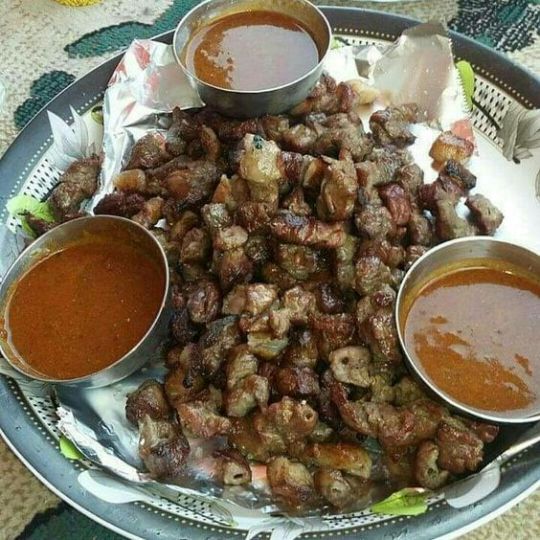
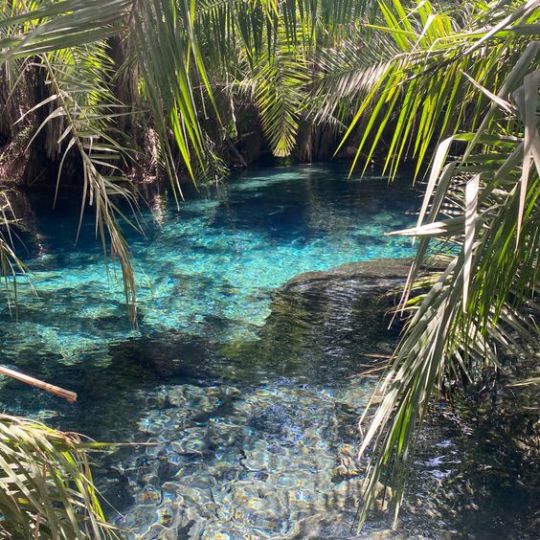
RUGGIE BUCCHI
Ruggie, similar to Leona would have diverse music taste. Probably grew up surrounded by music, listening to whatever was on the radio while cooking sum for his grandmother, and now he uses one of Leona's ten credit cards to pay for his Spotify premium. He def listens to albums when he's chilling on his bed, studying/trying to unwind after a long day of running around. Though he grew up on similar traditional East African music, his favorite genres (IN MY OPINION) would be alternative hip hop and indie music. He LOVESSSSS Kanye West (tcd to yeezus), Tyler the Creator (and honestly all of OFWGKTA), Gorillaz, Childish Gambino, Vampire Weekend, and early alternative hip hop artists like the Beastie Boys, A Tribe Called Quest, Cypress Hill, etc. He was also probably put onto Britpop through Gorillaz, and likes Blur, Oasis, and (it's a secret tho) he fucks with Radiohead's "ok computer" album.

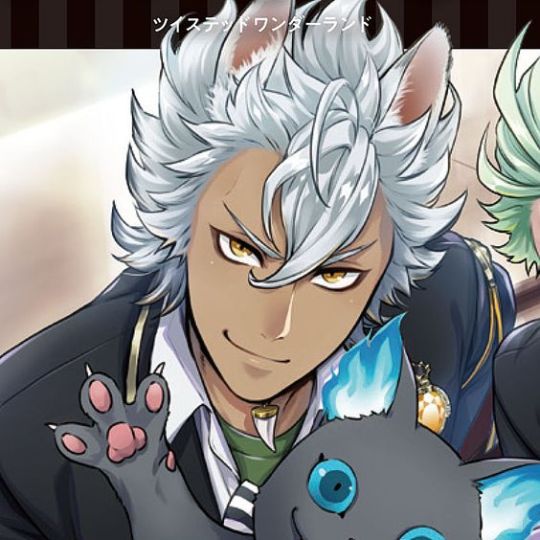


JACK HOWL
Jack is a canon gym rat. we already know he listens to music like HELL while he's bench pressing and doing pushups. I think he'd have similar music taste to Ruggie, excluding the "indie" part. (and he probably uses apple music, too.) Jack enjoys alternative hip-hop, and west coast hip-hop. He'd like Kanye and some of Tyler's popular songs, but he'd REALLY enjoy early 90s west coast rap like N.W.A, Dr. Dre. 2PAC ESPECIALLY, KENDRICK LAMAR ESPECIALLY. His favorite album is probably good kid maad city.

period -isa<3
#disney twst#twisted wonderland#leona kingscholar#ruggie bucchi#jack howl#savanaclaw#headcanons#twst headcanons#twst imagines#twst disney#leona kingscholar x reader#ruggie bucchi x reader#jack howl x reader
167 notes
·
View notes
Text
Water & Beach-Themed Names & Pronouns List

Names:
🤍 Masculine Names:
🐚Caspian - Origin: Caspian Sea
🐳Kai - Origin: Hawaiian - Meaning: "Sea"
🐚Ren - Origin: Diminutive of Rene or Japanese - Meaning: "Water lily; Lotus"
🐳Maxwell - Origin: Scottish - Meaning: "Great steam"
🐚Clyde - Origin: Scottish River Name
🐳Alon - Origin: Hebrew; Filipino Word - Meaning: "Oak tree; Wave"
🐚Solomon - Origin: Christianity; Hebrew - Meaning: "Underwater bridge; Peace"
🐳Earwyn - Origin: English - Meaning: "Friend of the sea"
🐚Salmon - Origin: Hebrew; English; French - Meaning: "Salmon; Peace"
🐳Mortimer - Origin: French - Meaning: "Dead sea; Stagnant sea"
🖤 Feminine Names:
🫧Cordelia - Origin: Latin; Celtic - Meaning: "Heart; Daughter of the sea"
🦑Mira - Origin: Latin, Slavic, Arabic, Sanskrit - Meaning: "Admirable; Peace; Female ruler; Ocean"
🫧Maya - Origin: Greek; Central American Indian empire name; Latinate Variation of May; Spanish, diminutive of Amalia; variation of Maia; Hebrew - Meaning: "Water"
🦑Talia - Origin: Hebrew; Australian Aboriginal - Meaning: "Gentle dew from heaven; By the water"
🫧Tallulah - Origin: Choctaw, Irish - Meaning: "Leaping water, Lady of abundance"
🦑Maren - Origin: Latin - Meaning: "Sea"
🫧Sabrina - Origin: Celtic, Latin name for the River Severn
🦑Marina - Origin: Latin - Meaning: "From the sea"
🫧Guinevere - Origin: Welsh - Meaning: "White shadow; White wave"
🦑Jennifer - Origin: Cornish variation of Welsh Guinevere - Meaning: "White shadow; White wave"
🩶 Neutral/Androgynous Names:
🌊Haf - Origin: Welsh; Icelandic - Meaning: "Summer; Ocean"
🦈Current - Origin: Water current - Meaning: "The motion of the Ocean"
🌊Siren - Origin: Greek Mythology
🦈Tasi - Origin: Chamorro; Christianity - Meaning: "Ocean; Sea"
🌊Dipsi - Origin: Hindu; Bislama - Meaning: "Light; Ocean"
🦈Daria/Darius - Origin: Persian - Meaning: "Sea; Possessing Goodness"
🌊Pelagic - Origin: Greek - Meaning: "Of, Relating to, or living or occuring in the open sea; Oceanic"
🦈Mer - Origin: The Word Mermaid/Merman; Spanish - Meaning: "Ocean; Sea"
🌊Wave - Origin: English - Meaning: "Arched form of water or sound"
🦈Bahari - Origin: Swahili - Meaning: "Sailor; Ocean"

Pronouns:
Nature Themed:
Sea/Foam
Wave/Waves
Moon/Moon
Tide/Tidal
Cur/Current
Co/Coral
Bub/Bubble
Wa/Water
Oce/Ocean
Sea/Sea
La/Lake
Ri/River
Aqua/Aquatic
Coa/Coast
Tide/Pool
Sho/Shore
La/Lagoon
Dead/Zone
Deep/Blue
Hurri/Hurricane
Isla/Island
Nau/Nautical
Ocean/Floor
Sur/Surface
Under/Water
Tsu/Tsunami
Al/Algae
Bac/Bacteria
Kel/Kelp
Sea/Glass
Animal Themed:
Wha/Whale
Shar/Shark
Jell/Jellyfish
Fi/Fish
Sea/Horse
Tur/Turtle
Sea/Seal
Or/Orca
Sea/Dragon [Leafy Seadragon]
Dol/Dolphin
Clown/Fish
Blue/Tang
Ott/Otters
Sea/Lion
Octo/Octopus
Squi/Squid
Wal/Walrus
Lob/Lobster
Spon/Sponge
Be/Beluga
Angel/Fish
Mana/Manatee
Star/Fish
Eel/Eel
Sea/Urchin
Cuttle/Fish
Barra/Barracuda
Man/Manta
Ray/Ray
Croco/Crocodile
Mythology/Legend Themed:
Sea/Serpent
Ocean/Dragon
Si/Siren
Mer/Mermaid [Merman, Merfolk & Merbeing Also Work]
Sing/Singing
So/Song
Lu/Lure
Kra/Kraken
Levi/Leviathan
Loch/Ness
Ap/Apsara
Ka/Kappa
Ni/Nixies
Ca/Calypso
The/Thetis
Ne/Nereids
Oce/Oceanids
Na/Naga
Na/Naiad
Po/Poseidon
Tri/Trident
Tri/Triton
In/Indra
Nep/Neptune
Va/Varuna
Ce/Cetus
Ich/Ichtyo [Ichtyocentaurs]
Sea/Monster
Sel/Selkie
Ma/Makara
Beach & Pool Themed:
Flip/Flop
Mock/Mocktail
Mo/Mojito
Be/Beach
Sta/Stand
Swi/Swim
Ba/Ball
To/Towel
Sun/Sunscreen
Bo/Boat
Beach/Side
Pool/Noodle
Beach/Chair
Bu/Bucket
Palm/Tree
Tree/Tree
Sun/Sun
Sha/Shade
Sha/Shadow
Pool/Pool
San/Sand
Go/Goggles
Sur/Surf
Sun/Sunset
Re/Resort
Salt/Salt
Sand/Sandcastle
Ya/Yacht
Fi/Fishing
Fin/Fins
Emoji Themed:
🐢/🐢s
🐍/🐍s
🐙/🐙s
🦑/🦑s
🪼/🪼s
🦐/🦐s
🦞/🦞s
🦀/🦀s
🐡/🐡s
🐠/🐠s
🐟/🐟s
🐬/🐬s
🐳/🐳s
🐋/🐋s
🦈/🦈s
🦭/🦭s
🐊/🐊s
🌴/🌴s
🐚/🐚s
🪸/🪸s
🍹/🍹s
🦩/🦩s
🛟/🛟s
⚓/⚓s
🪝/🪝s
🏝️/🏝️s
🌅/🌅s
🏖️/🏖️s
⛱️/⛱️s
🩴/🩴s
🫧/🫧s
🌊/🌊s
🍧/🍧s
🧊/🧊s
🍨/🍨s
🍦/🍦s
🥤/🥤s
🍸/🍸s
🍹/🍹s
🦩/🦩s
🛟/🛟s
⚓/⚓s
🪝/🪝s
🏝️/🏝️s
🌅/🌅s
🪨/🪨s
🌙/🌙s
🌑/🌑s
🌒/🌒s
🌓/🌓s
🌔/🌔s
🌕/🌕s
🌖/🌖s
🌗/🌗s
🌘/🌘s
👡/👡s
🥽/🥽s
🏄/🏄s
🚣/🚣s
🤿/🤿s

🪸These weren't requested, just decided to post some things as well until we start to get requests!
🪼All of the dividers are from: saradika.tumblr.com! Thank you so much for these beautiful dividers! ^^
~ Created Mainly By: 🧨⛓️📻 {{ Wilbur/Alastor }}
#neopronouns#neoprns#pronouns#emoji pronouns#name suggestions#pronoun suggestions#ocean themed#sea theme#beach theme#chaos council#alastor fictive#dsmp fictive#hazbin hotel fictive#male names#female names#unisex names#neutral names#osdd system#did system#did osdd#disabled system#lgbtqia#lgbtq community#lgbtq#lgbtqplus#lgbt pride#queer community#queer#nature theme#alterhuman
61 notes
·
View notes
Link
0 notes
Text

Source: Prita Meier - The Surface of Things: A History of Photography from the Swahili Coast (2019) [The Art Bulletin, 101(1), 48–69]
10 notes
·
View notes
Text
s6 episode 22 "biogenesis" thoughts
season finale time!!!
i haven’t watched an episode in a week to avoid having to finish the season, but i have started working on my favorite moments list so i would be better prepared. and here we are!
mulder thinks that life began somewhere that isn’t earth… because of some metallic stuff… well. let’s investigate!
i hope we get some answers on his crankiness. but i’m expecting a ton of plot and little character development in this and the next one. but i can hope to be proved wrong! even if i don’t think we’ll ever beat the s2 finale. sighs… how good we had it.
(post-episode thoughts: i need answers. i need krycek's head mounted on the wall the way people display their ten point bucks. i need justice for skinner and to place both of the agents in a big cozy bed where they can have a sleepover.
this episode was actually pretty good! i'm a bit cynical when it comes to mytharc stuff because it is usually just TOO MUCH going on at once, but this one gave me lots to ponder. i love mulder whump and angry protective scully, so!! i was pleased. but also mad af at Certain Characters. i almost went right ahead and watched the next episode despite my system of rules, but it is a THREE-PARTER, and that is going to take me at least a week to get through ON TOP of still having to post my s6 favorite moments😭so i will just be stuck Suffering over here in cliffhanger land for the foreseeable future!)
anyway. back to the beginning!
ah. we open on the earth. i expect a monologue. oh! it’s scully this time!! i’m so used to mulder monologues on the nature of reality, this took me by surprise
scully is gonna tell us about single-celled life. from the sea. maybe that’s why she feels a kinship with the ocean. and then multicellular life comes next.
for a split second there, i felt like i was watching a nature documentary narrated in scully’s soothing voice. to be honest, i didn’t hate the experience.
440 million years ago… mass extinction. no oceans. then plants. then bugs. WHAT? ANOTHER mass extinction after that? come on!! it was just getting good!
AND IT KEPT HAPPENING?? can you tell i’m not a science girly?reptiles showed up and then got killed off AGAIN? then birds and dinosaurs. and again. mass extinction.
okay, well i knew about the dinosaur one. give me some credit.
humans emerged 100,000 years ago. and this is the stuff i know.
look at all of these very 90’s visuals. i feel like i’m in a bill nye episode.
“rising to a world population of over five billion people” well! it is still above five billion people. just… a lot more than that these days.
ahh... i can just hear it. “you’re my one in eight billion, scully” (accompanied by a light forehead kiss)
she says we are all related to that one singular cell. which i don’t want to think about. but no one knows where that first cell came from.
“is there a plan, a purpose, or a reason to our existence?” girl, you’re catholic! but i suppose even catholics who have a party line with all the answers to those big questions still muse on the nature of reality. especially if they are scientists and also named scully.
i don’t want to think about a 6th extinction… not of humans or all the birdies… and jaguars… no. we shall simply have to not die.
ah. now we have transitioned into the plot rather than musings on the meaning of life. men are shouting in swahili as something washes ashore. it is… a rock looking thingy.
intro time!!!!!! you can’t help but dance to such a spooky tune!! i still get nostalgic for watching season 1 last may sometimes!
no special words on the intro this time… hmm! i thought we were due for some.
on the ivory coast, we see that krycek will be in this episode thanks to the opening credits. but other stuff is happening, too. the metal thing is here!!
it is taken to a university for studying. where a man (later revealed to be named dr. merkmallen) carefully unwraps another one!!! the two pieces look like they’ll fit together, but when he holds them next to each other, they merge into one and shoot across the room!
this guy’s office looks so cool. OH DAMN! the metal piece cut into his bible!!! a revelation indeed. and now it’s spinning???? and getting faster!!! he wraps it back up.
ohhh, it cut into genesis as this fellow calls for an international operator… how… prophetic.
three days later, the gentleman arrives at the american university in washington, which sounds like a fake name for a school, but it is a real place. he is looking for professor sandoz from the bio department.
no! this other dude has monkeys!!! what is he doing with them??
sandoz is the monkey guy. and this other fellow is dr. merkmallen. sandoz welcomes him in and asks to see this mysterious object. merkmallen was almost detained for having it
ohhh, the monkeys do NOT like this mystery object. they are screaming terribly. i really do not like monkeys, bro. the pieces have merged together.
oh shoot! when he asks merkmallen if he’s had any luck reading it, he realizes that is not dr. sandoz!! nooooo!!! leave him alone!!!!!!!
someone else hears the angry monkeys, and enters the room to find the metal piece missing. WHERE DID YOU TAKE MERKMALLEN? NOOOO!! he is dead on the floor!!!!!!!!!! come on, we just met the guy and you take him from us already?!
bow tie dude who found them dead seems freaked tf out
(we later learn that bow tie dude is the REAL dr. sandoz, and the other guy who dr. merkmallen was speaking to was named dr. barnes. i have to insert this note here because it makes sense when you're watching the show visually and can see the different characters, but typing this up can lead to some confusion. so. bow tie guy = sandoz. monkey guy = barnes. got it? okay)
hey! it’s skinner! polishing his glasses. saying he thought of someone, given the nature of merkmallen’s views. “i believe agent mulder is familiar with his work”
mulder is pondering. he looks good today. he usually does, but just thought i’d voice all the thoughts running through my head. scully reads his file- his body is missing.
mulder says the word “panspermia”, which he says is a fringe theory.
OH! scully finishes his sentence. LMAO, yeah. she knows this concept: the idea that life began on another planet. mulder is watching her intently.
skinner asks if it’s plausible, and she says it’s a theory. lots of scientific theories are plausible.
skinner hands her a rubbing of the mystery artifact that allegedly held the meaning of human existence. and dr. sandoz had made a similar claim in a SCIENCE (pointed mulder tone and look at scully) journal
but they can’t ask dr. sandoz anything… he’s missing!
scully thinks this is a police matter at best, but mulder says oh come on, skinner wants us on it!
this elevator is very crowded. yeah. force them into close proximity. hahaha!
oh… when he opens the paper, he can’t hear anything or anybody. scully thinks he didn’t want to listen to her say that she doesn’t understand his relentless pursuit of the truth, but he clarifies he couldn’t hear it!
OHHHH... scully with her arm up against the elevator….. yeah <3
“look, after all you’ve done, after all you’ve uncovered- a conspiracy of men doing human experiments, men who are all now dead- you exposed their secrets. i mean, you’ve won. what more could you possibly hope to do or to find?” “my sister”
oh, i GASPED! because at the end of the day, that’s really what it’s about. a boy looking for his little sister. sometimes we forget that with all the mothmen and slowburn stuff. but… man. my heart.
they head off to the university. where something is afoot, as shown by the shadow crossing the scene and someone snatching up crime scene evidence.
the police say they have a probable weapon with blood and prints, but no word of dr. sandoz.
dr. barnes, the head of the department, says there is plenty of speculation on what went down. “apart from his laughable ideas, my colleague was capable of almost anything to advance his rather questionable reputation” <- LMAO... so they did not like this guy or talk with him at faculty department meetings. got it.
he was speaking of a mystery artifact- scully shows him the picture and asks if he means this thing. and again, mulder hears a bunch of weird sounds!! scully watches as he leaves. and dr. barnes says that these men who claim life comes from elsewhere are embarrassments.
mulder’s trying to splash his face with water in a sad water fountain. aww. poor guy. scully asks him what it is. OH. she touches his forehead to look for a fever………… oh. see, that’s always gonna get me. he thinks it’s the thing making him feel terrible!
she opens it and he hears it again. despite it just being a piece of paper.
scully is conducting some sort of meeting. “you’re late!” “i’m sorry, i thought this was my office” <- this is why you are being punished with evil ear noises
she called chuck to get an explanation. “you know me, this is right up my twisted little alley”, he says
chuck seems vaguely familiar to me, but not deeply. i'm sorry 💔 i guess i'm a fake fan
oh! the writing is a fake! it’s phonetic navajo, but it makes no sense in a literal interpretation. is it code?
maybe it’s a magic square? thankfully they explain what that means- it allegedly comes from god and is used for trapping and storing potential power. maybe that is what someone would want mulder to think it is.
change those projector slides. do not let the light hurt your eyes, scully!
so barnes wrote an article exposing sandoz as a fraud. he made a career exposing science and religious fraud. but that was him at the beginning with the monkeys, right? and sandoz came in later with the bow tie? and then left?
why produce a fraud with navajo writing in africa? again! a great question! but when he puts the picture of the artifact on the projector, poor mulder's head hurts!!!
OH!! she goes up to him and gently says “hey” and he groans….she leads him outside. so gently. could this pain have to do with what happened to him at the end of s2? where he was brought back from the dead with the navajo healing? and maybe somehow seeing the writing triggers something?
scully says she will schedule him imaging testing immediately- if nothing else, he should be home in bed! but he refuses, saying he knows what is causing this! he thinks barnes killed merkmallen!
“well, i hope you’re not going to suggest that we arrest him on that rather baseless assumption” <- LMAO, she has time to be a little pain even when he is suffering
“no i’m not. not until after i show you what he did with the body” <-oooo, it’s getting juicy….
they go to visit sandoz’s place, where the landlord does not want to deal with them. DO NOT WAVE YOUR HANDS AT SCULLY, MR. LANDLORD! they’re searching about…. mulder finds some luggage from new mexico.
OUR FRIEND ALBERT HOSTEEN!! pictured on the wall with sandoz!!! mulder says that maybe sandoz was using him to read the symbols… but scully says “or write them” <- now, albert is a good man!! do not accuse him of being involved in forgery!
i guess he could have asked albert to translate some stuff and then not explain what it was for... so he wouldn't have been in on the knowledge he was being used for forgery... but still. i think he would be deeply insulted at the thought of his culture being used to make forgeries of mysterious artifacts.
EUGH!! scully asks him to make good on his body prediction, and when mulder opens the trash, he does indeed find just this! it’s merkmallen!!! or just his head. NASTY!!!!!
the agents go to skinner, saying they think that sandoz is innocent and framed- just afraid for his life because of what he knows and has.
skinner asks him if it’s this (passes over the rubbing) and mulder is struggling….. “scully could you please tell…. what your medical exam found in the lab report?” he asks with his eyes closed.
body parts were missing. all of which would show radiation. and they did find some radiation! cosmic galactic radiation! mulder insisted that they test for it!!!
OH SHOOT!!! he is getting worse… and says to skinner that he knows there’s someone else on the case that he’s not telling them about!!! “i hear it… in my head” “mulder, let’s go”
ohhhh... she says he’s losing it!!! but he claims skinner is spying on them!! i do not think skinner would do this. scully banishes him home, saying she will look for the artifacts. and he doesn’t really put up a fight, which i know means he has something planned…
but shoot!! skinner closes his door…. and there was a camera in his closet!!! he pulls out the tape and hands it to KRYCEK!!!! NOOOO!!! because he has the kill switch!!!!!!! for his weird disease!!! nooo!!!
oh, skinner…. this is so sad. and how did mulder hear in his head that skinner had someone else on the case just from the rubbing of a piece of metal?!
krycek leaves after skinner and him stare at each other for a bit.
scully heads down to a new mexico hospital, where she finds someone being rushed to another room. is that albert? there’s a translation of the writing on the artifact! IT’S A VERSE FROM GENESIS!! the same one that the artifact ran into at the start of the episode!!!
and it was mr. hosteen being wheeled out!! the nurse says she cannot tell her what is going on, but scully flashes the badge and says she knows him, and she confesses that he has cancer and is dying. :(
mulder is wearing casual clothes- one sleeve rolled to his elbow, one pulled down to his wrist, a bold fashion choice- in the university where barnes teaches. boy is doing some recon, i guess. he sneaks in somewhere he shouldn’t be…..
ah! he’s in his office!!! and barnes comes in…. realizes that his things have been touched…. and rushes back outside…. he goes to find the monkeys. where mulder was hiding!!!
but mulder hears the stuff again!!!! and he keeps hearing it as he walks down the hall. bro is going to collapse in this hallway full of undergraduates. he tries to go up the stairs. but it isn’t working well. he’s crawling on his hands and knees and he falls!!!!! what is going on!!
meanwhile, scully is waiting for albert, who is rolled back into his room. but someone was watching him!!! and she chases after him!!! was that barnes?? where did he go??? the music is so creepy…..
she finds him!!!! it’s not barnes!!! it’s sandoz!!! she says she needs answers from him!!!
mulder is still on the ground, writhing in pain!! FUCKING KRYCEK FINDS HIM!!!! and just walks away!!!!! WHAT DOES HE KNOW?!?!
where is he going…….. he goes to barnes and says they are destined to be great friends, handing him the tape. why do they know each other....
back in new mexico, sandoz says that albert was the only translator that didn’t dismiss him- he recognized the importance of the artifact. but it was only one fragment. until merkmallen found two more.
oh! he thinks the bible came from the aliens!! so would that make navajo the original language of the aliens??
scully is very skeptical. the newest section of writing on the artifact seemed to be just random letters, and albert was working on translating it when his health got bad. and it starts spinning in front of them!!!
phone call time. where is mulder??? he says he’s at home, resting. was he with marita? a woman answers...
scully is not pleased with his idea that aliens put us here. WHERE IS HE?? he says it explains everything. “mulder, i will not accept that. it’s just not possible” “well, then you go ahead and prove me wrong, scully” (cranky sick man hangs up)
HE’S WITH DIANA?!?!? I THOUGHT WE WERE DONE WITH THIS!!!!
okay. so it is his apartment, which now has a bed. a very cozy looking bed, may i add. i'm happy for him in that regard. but in every other way, this situation is deeply unfortunate.
and diana is in his apartment. she’s calling someone, saying mulder is in distress, and she’s not leaving until she finds out. AND SHE TAKES HER SHIRT OFF???
GIRL, HE’S DYING!!! LEAVE HIM ALONE!!!
she was talking to CSM?!?
holy hell... is diana going to assault him........? what tf is going on.
scully narrates again… the big bang. an act of violence. who did this?
no! albert is being taken to a funeral pyre!! she looks at the stars above.
wait! he’s not dead. it’s the healing tent! sandoz asks if she wants to come, but scully doesn’t think it’s right for her to join, as she doesn’t share their faith. this is very respectful of her.
skinner calls!!! mulder is in serious condition!!! she has to get here now!!! but she told skinner that sandoz is in new mexico!!! will skinner have to tell krycek?? how quick can you get to DC from new mexico?!
somehow she gets back, but he's not telling her what is going on. skinner calls her dana and grabs her hand….. (omfg... has he ever called her dana before?!) and he says he doesn't know what is going on, but he knew she would want to be here.
mulder’s walking around in a padded room!!! mumbling!!! screaming!!!! and diana is here, too!!
he’s too violent for them to run more tests!!! he should be in a coma!! scully says to let her try talking to him!! he wouldn't be a danger to her! OH........ oh.... :( she thinks he wouldn't hurt her.... oh. my heart.
“can we speak in the hall?” “about what?” <- OH! she does NOT have time for diana’s tricks… but skinner says her name… and opens the door. and mulder looks up at the camera watching him.
OHHH what is going on here…??? skinner says that scully has evidence the case is a fraud, and she turns and says “i never sent you that report” <- OH!!!!!!
diana is asking if she can help him- she asks scully to tell her whatever she knows... she says she found him in the stairwell and he could barely speak.
OH!!!! she tells diana she’s a liar and goes to leave. skinner grabs her wrist and she says “you’re both liars”
OMFGGGGGGGGGG….. treacherous skinner CONFIRMED…. but it isn't his fault!!! she escapes from his grip. and he stares at diana.
back in new mexico, more chanting is taking place around albert. sandoz is there.
scully runs into the office, looking for bugs. and she finds a camera in the smoke alarm!!!! but just as she does so, the phone rings. is she going to answer….?
sandoz calls her from new mexico…. she says it’s not a secure line. why did he call right then?! he says the stuff on the artifact, when translated, reads as coordinates for the human genome!!
but the horses are stirring out in new mexico by sandoz… and there is a gunshot…. and krycek picks up the phone!!! the rat bastard!!!! so did skinner tell him where sandoz was?? or was krycek listening in on the line?!
36 hours later. back on the ivory coast. scully is here!!! trying to find more pieces of the artifact!!! she is led to one….. and she reached in the sand…… and it’s huge!!!!!
it’s some sort of spaceship?? space cathedral?!? huh???? vaguely churchy music plays as the camera pans out...
to be continued?????
girl…. WHAT is going on!!!
skinner is being manipulated by krycek. sure. that’s fair enough. and diana is using mulder for CSM. but to what end!!! did she drug him?? why did she take off her shirt??? can they cure skinner and get him to stop doing all of this?? how long have they been getting spied on??? did the syndicate get to watch their whole baseball flirting session through that smoke alarm camera? is skinner attempting to plot his own resistance? it seems like he is just going along with the whole thing! and that is deeply unlike him!!
UGH!!! how will mulder get better??? was he okay in the time that scully was away??? she must have felt so horrible flying to another continent while he was so sick...
i might break my own rules and watch the next episode tomorrow, and THEN edit my notes. and i’m usually SO principled. i think i’ve only done it once or twice in the entire time i’ve run this blog. but i NEED to know. because like. this diana issue must resolve itself. and what about albert!!!! and fucking krycek!!!
ahhhh!!!!!
oh, FUCK ME!!! i clicked onto the next episode, and i saw that this is a THREE-PARTER, not a mere two-parter!!! so i basically cannot do this plan of watching them all at once!!! because i would get super backlogged when it comes to editing my notes!!! and i still have to do my favorite moments list from s6!! i simply cannot bite off more than i can chew!!! FUCK!
AHHHHH!!! well. i guess that means i’ll get these notes up tomorrow and then start on the favorite moments list. and not have answers. sadly kicks a rock….
so, i have many questions, and i anticipate that few of them will be answered. why is krycek working with dr. barnes? are they trying to expose the x files as fraud? because that is what dr. barnes does- exposes people for fraud? but then why would dr. barnes kill dr. merkmallen? unless dr. barnes is part of the syndicate... there's a pretty big difference between writing a scathing academic article calling bullshit on your coworker's alien theories and actually committing murder. so he must know of the importance of the artifact but is trying to conceal it... because that is the only explanation as to why he would kill somebody over it. and krycek said they were destined to be great friends... and i can't tell if that implies if they knew each other already...
so clearly dr. barnes is lying, because he knew dr. merkmallen was coming, and he asked if the writing had been translated yet. so he knows that the thing is powerful. okay. it's not super clear how his interests correspond with that of the syndicate, but maybe he's an alien?
so. the artifact. the bible MAYBE comes from space, and the aliens use the navajo language. sure. why not?
if it means we get to see our friend albert again, that makes me happy. but he isn't doing very well. it's almost like the writing on the artifact made him sick... because sandoz said that he fell ill when she started to translate it. maybe whatever is happening to him is also happening to mulder? and mulder is in the early stages of whatever it is? and so if scully can find a cure, maybe she can help them both?
or maybe it's something totally different, because mulder was screaming and having his brain go wild, whereas albert was said to have cancer. maybe one progresses into the other?
i am so troubled by skinner working with diana and krycek and CSM. obviously he doesn't want to be doing this! but is he just going along because he knows if he doesn't, he'll die? but he made that promise on his death bed to do better and help the agents more!! is he somehow sabotaging them? did he call her "dana" to tip her off to the treachery? he knows scully isn't stupid...
and scully knew right away that this wasn't a matter for the FBI, but once again mulder got taken in and fully believed the promises of investigating aliens with no real evidence to support it... only that it was coming from skinner, one of the few people he should be able to trust, and the terrible aching desire to find his sister that keeps him up at night and makes him so easy to manipulate...
fucking diana. i thought she was gone!! i should have known better. what is she doing with him? he goes from hearing things to having crazy brain activity when she conveniently finds him? did he really call her and ask for help? i don't buy the story for a second! and she calls CSM and says she won't leave until she knows what is going on... and then she takes her SHIRT off... is she trying to manipulate him? or did she straight up assault him? he's dying!! he doesn't want to see your boobs!!
scully immediately clocking that diana and skinner were lying to her face... yeah. this is immensely satisfying to me.
well. now i have to edit my other notes before i can watch what happens next. and as i type this up on a sunday, i imagine that it will be tuesday at the earliest before i get to watch part two. and then goodness only knows when i will be able to watch part three! this is deeply unfair! but alas. i stick by my routine.
diana and krycek... you freaks deserve each other... although i still think krycek/spender is far juicier. even if spender might be dead. sorry. i will speak my truth.
#ARGHHHH i hate having to wait. if i had to wait a few months i would be so mad. i would be breaking down every scene to analyze for clues.#okay. so. lots going on here. but protective scully has my heart and soul. yeah. get their asses baby!#everyone cross ur fingers that albert and mulder both make a full recovery. poor mulder :(#i still want answers on his bitchiness throughout the season... maybe it has to do with diana. or maybe he was sick the whole time?#SHRUGS. i guess i will simply not know until i get a chance to see what happens next. which will NOT BE SOON!#juni's x files liveblog#6x22#the x files#txf
11 notes
·
View notes